One of the most common questions we hear at Mabrie Facial Institute in San Francisco is “How long do fillers last?” The surprising answer: Filler results can last for years! In fact, at MFI, we see patients retaining up to 80% of their initial results even after a full year without treatment.*
To understand this, we have to consider more than just the physical or chemical properties of the products.
Results Longevity vs. Filler Longevity
What patients really want to know is how long their results will last after getting filler injections. This distinction is important. We know from experience that our patients are seeing results that last for several years after their initial treatments, and the lifespan of the filler product is only part of the equation.
Results Longevity
You can enjoy visible facial rejuvenation or contouring results even after the body absorbs the specific filler injected. In fact, many of our patients at MFI retain up to 80% of their initial results after a full year has passed.
Here’s why: Filler injections can stimulate collagen production in the treatment area. That means your own body is producing a substance that restores volume in the area. How great is that?
One phenomenon we’ve observed at Mabrie Facial Institute is that our patients tend to enjoy improvements lasting years—sometimes even after they’ve discontinued treatment. The following patient is a great example of the remarkable longevity of under-eye fillers:
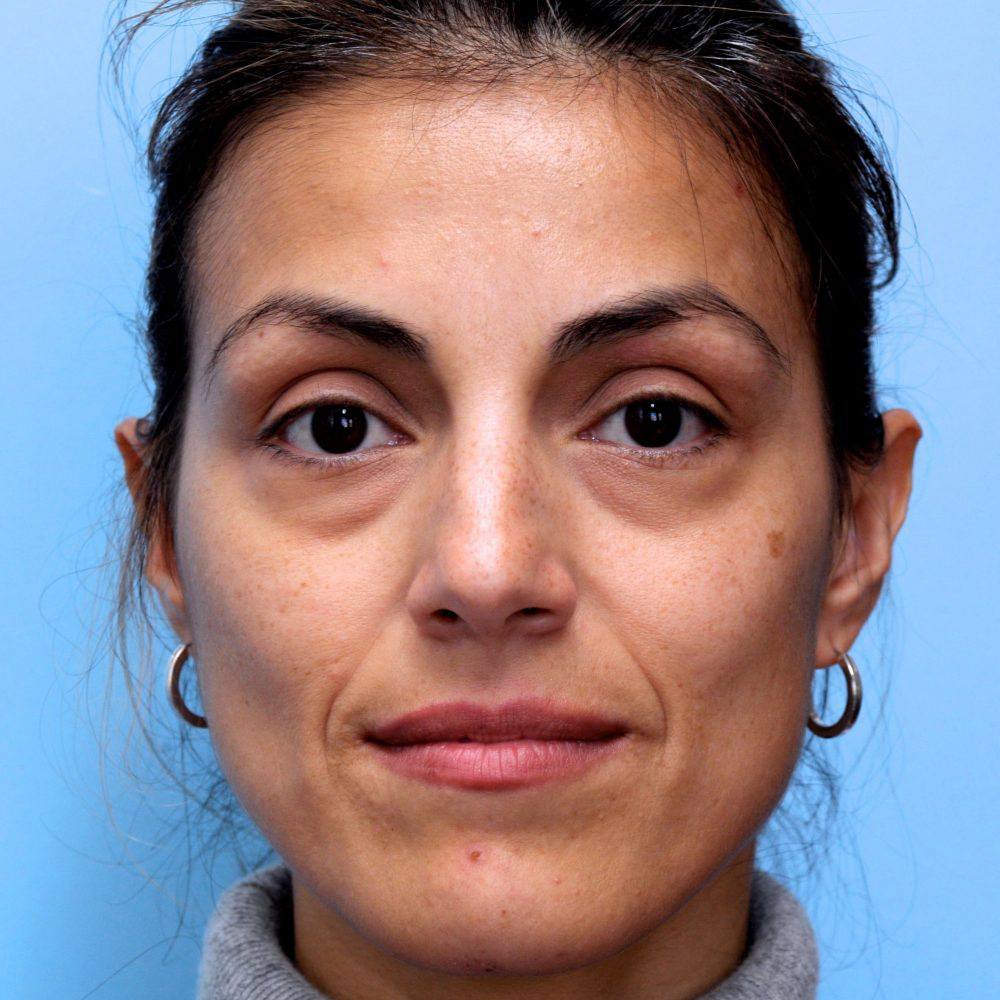

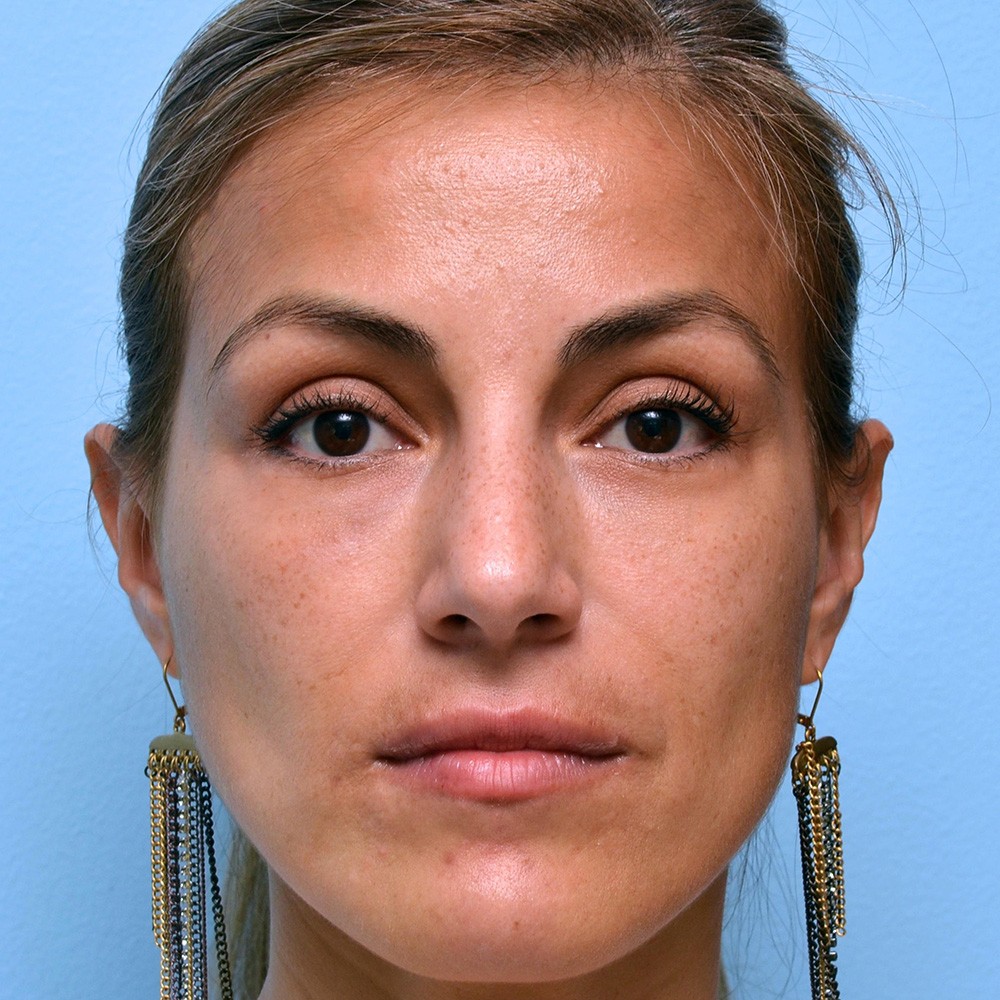
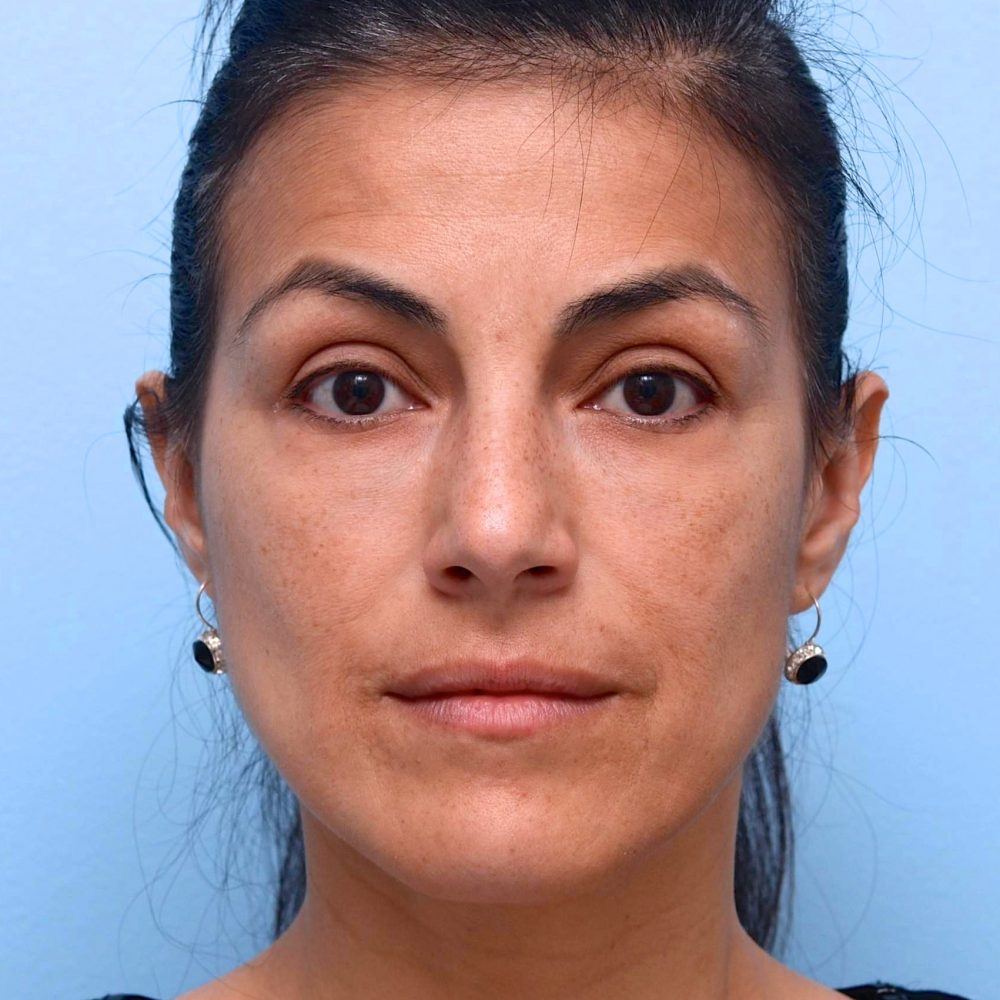
The final photo was taken 4 years after her previous treatment, and her results still look perfect! That means her filler results lasted 7x longer than anticipated!
Here’s another example of a patient whose results seem to last indefinitely:




We’re seeing that tear trough filler results can last more than 12 months, especially when you create support in the midface. This is much longer than the 6-month intervals for tear trough filler maintenance that we once recommended.
Filler Longevity
Factors that influence how long filler lasts after injection include:
- Metabolism – Each person’s metabolism plays a significant role in how long dermal fillers last. Faster metabolic rates can lead to quicker breakdown and absorption of the filler material, meaning that active individuals or those with naturally higher metabolic rates might notice a shorter duration of results. Factors like genetics, overall health, and even lifestyle choices contribute to the rate at which the body metabolizes the filler.
- Treatment Area – The specific area treated is also a factor in determining filler longevity. Areas subject to constant movement—such as the lips or around the mouth—tend to experience faster filler degradation due to repetitive muscle activity. In contrast, regions like the cheeks or under the eyes, which are less dynamic, can retain filler effects for a longer period. Additionally, the thickness and vascularity of the tissue in the treatment area can influence how quickly the filler is resorbed.
- Injection Depth and Technique – The depth at which filler is injected and the technique used during the procedure are vital for optimal longevity. When fillers are placed at the correct depth—in the appropriate layer of the skin or subcutaneous tissue—they are more likely to integrate with the surrounding tissue and provide a natural, lasting effect. Precise injection techniques that distribute the product evenly can minimize overcorrection and reduce the likelihood of rapid degradation. An experienced Injector tailors the approach to both the type of filler and the anatomical characteristics of the patient for improved durability.
- Filler Material and Consistency – The type of filler and its physical properties are key determinants of how long your results will last. Different filler materials, such as hyaluronic acid, calcium hydroxylapatite, or poly-L-lactic acid, come with varying viscosities and degrees of crosslinking that affect both their cohesiveness and durability. Thicker, more cohesive fillers tend to offer longer-lasting support, especially in areas that require structural reinforcement, whereas softer fillers may be better suited for delicate regions. The manufacturing process and the specific formulation also affect how resistant the filler is to metabolic breakdown, making the material choice an important factor in achieving prolonged results.
- Skincare Habits – Skincare routines can have a noticeable impact on the lifespan of dermal fillers. Using high-quality, hydrating products and protecting your skin from environmental damage like smoking and UV exposure helps maintain skin health and elasticity, which in turn supports the filler’s longevity. Heat-based and laser skin treatments can potentially affect the longevity of dermal fillers if not properly timed or executed. Excessive heat or aggressive laser settings—especially soon after filler injections—may accelerate the degradation of certain filler materials by increasing local metabolic activity or disrupting the filler’s structure. However, when these treatments are scheduled with an adequate waiting period and performed using settings designed to minimize tissue disruption, they typically do not significantly shorten filler longevity.
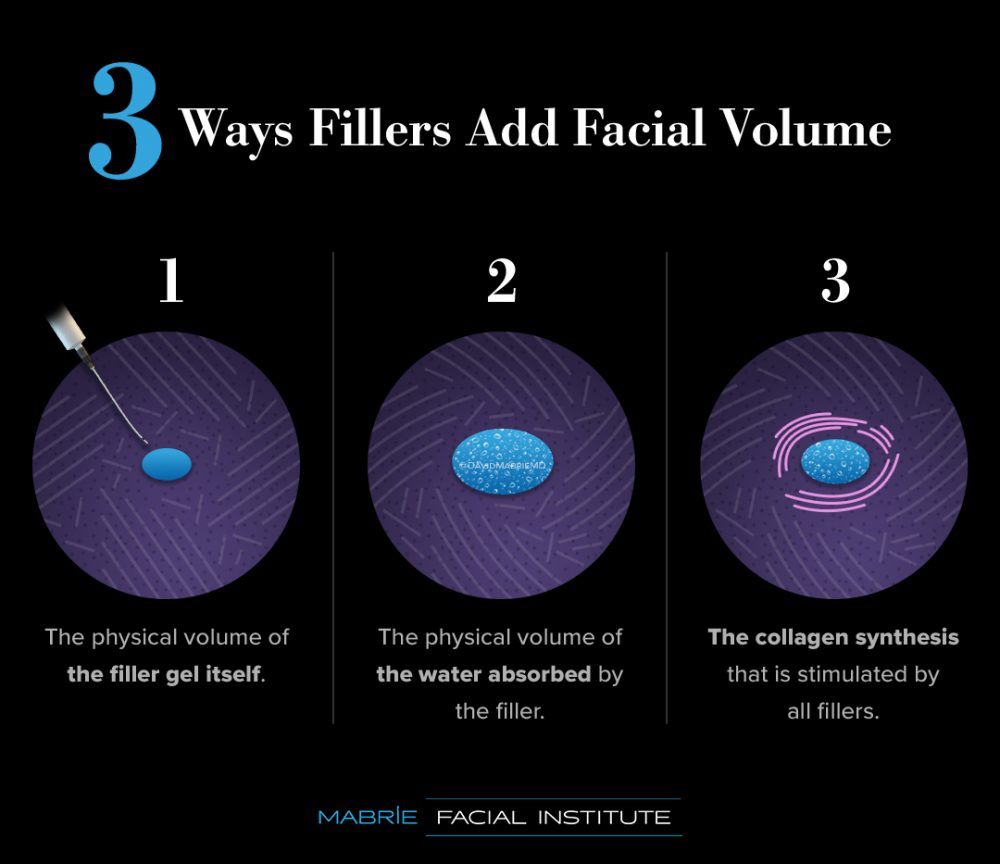
The Role of Your Injector in Your Results Longevity
One of the key reasons our patients see phenomenal longevity and results that seem to get better over time is the continuity of care they receive from their dedicated Injector. When you come to MFI for fillers, you get a partnership characterized by:
- Personalized, Ongoing Treatment Plans: Your Injector gets to know your unique anatomy, aspirations, preferences, and lifestyle, enabling a treatment plan that’s truly tailored to you.
- Reliable, Natural-looking Results: Your Injector keeps your look consistent, fresh, and in line with your preferences, even as your face changes over time.
- Valued Expertise: As products, treatments, and your needs evolve, your Injector serves as a trusted advisor, helping you address new concerns and treatment options.
One of the reasons you’ll never see an overfilled MFI patient is that our Injectors understand the real lifespan of filler results, and we adjust our touch-up treatments accordingly. In many cases, our touch-ups require just 20% of the original amount of filler. Without this understanding, some providers inject the same amount of filler at each appointment, resulting in the dreaded “pillow face” we’ve all seen.
How Can You Make Your Fillers Last Longer?
Fillers gradually degrade during the initial few months after being injected. Because fillers absorb water, you can still see the results. But at about the midpoint of the expected duration of the fillers, you’ll start to notice the filler’s decreased volume.
Can you get more mileage from your fillers? By anticipating the decreasing volume through a phased approach, Mabrie Facial Institute extends the life of your results. We create personalized treatment plans for each of our facial rejuvenation and contouring patients. Our packages are designed to prolong results and include 2 treatment appointments. We build and layer the fillers during these treatments.
Our approach to non surgical facial rejuvenation and contouring includes creating a comprehensive, multi-phase treatment plan that’s designed to provide long-lasting results with touch-up treatments every 9 to 15 months. As the fillers stimulate the body’s natural production of collagen, patients begin seeing results lasting longer. Additionally, we’re able to use less product to maintain the results, which remain looking fresh and, ideally, no one experiences a “gap” in their results.
Filler Longevity Based on Treatment Area
Although our approach is to keep you looking your best 24/7/365, we can make generalizations about how long fillers last based on the treatment area.
How long do under eye fillers last?
Results using a hyaluronic acid-based filler can last 12 months or even longer when treating the tear trough area under the eyes. Restylane is a common choice for under the eyes because it’s firm enough to support the thinner skin in that area.
How long do cheek fillers last?
Using a hyaluronic acid filler such as JUVÉDERM VOLUMA® creates results that can last 24 months. A touch-up treatment at 12 months helps maintain and prolong the results. VOLUMA and RADIESSE® are thicker fillers that provide the lift that cheeks need to look more youthful. RADIESSE lasts approximately 15 months, with a touch-up treatment at 9 months.
How long do nose fillers last?
Non surgical rhinoplasty using a hyaluronic acid filler such as Restylane can last up to 12 months or even longer, with maintenance treatments scheduled at approximately 12 to 18 months. Restylane is a firm, thinner gel that enables the injector to sculpt and shape nasal skin more effectively than thicker fillers.
How long do lip fillers last?
Lip augmentation using fillers can last up to 6-9 months or more with multiple treatments. Restylane, Restylane Silk, and JUVÉDERM are popular fillers for lip enhancement. These are softer gels. Restylane Kysse is an exciting newer option that offers natural movement and expression, along with results that last up to 12 months.
How long do fillers last at the corners of the mouth?
Hyaluronic acid fillers can produce results that last a total of 1 year, with a touch-up treatment at 6 months. Most fillers can get good results in this area, but hyaluronic acid fillers can be dissolved if they are accidentally injected into a blood vessel (a rare complication).
How long do chin fillers last?
Chin augmentation using fillers, such as JUVÉDERM VOLUMA, RADIESSE, or a combination of products, can produce results that last between 15 and 24 months with touch-up treatments. Chin enhancement creates a well-defined profile that both men and women desire.
How long do jawline fillers last?
Jawline fillers last anywhere from 6 months to 2 years, depending on which products are used to achieve your dream profile. Restylane Lyft lasts about 12 months, with touch ups recommended after 9 to 12 months. On the other hand, JUVÉDERM VOLUMA XC, RADIESSE, and Sculptra can last 2 years or longer, with annual maintenance treatments recommended to preserve your look.
Dissolving Filler: When You Don’t Want To Wait Out Your Filler Results
Patients at MFI love their long-lasting results, but sometimes, “new” patients come to us because they’re unhappy with filler results from another provider. Fortunately, we can help dissolve hyaluronic acid fillers with injections of a substance called Hylenex®. Some of the top reasons people come to us for corrective injections include:
- Overfilled “duck lips” or a “pillow face”
- Improperly injected under eye filler (Tyndall effect)
- Asymmetrical results or lumps
Our skilled Injectors use Hylenex to dissolve the old filler either partially or completely. In most cases, we will re-treat the area with filler to create the beautiful results these patients sought from their original treatment.
As we’re learning how long fillers can really last, it’s all the more important to choose a skilled Injector who approaches your treatment with the gravity and precision of a medical procedure.
How Long Do Different Fillers Last?
When the FDA approves a filler, it indicates how long the results can be expected to last. While actual longevity may vary from the FDA’s guidelines, the guidelines provide a good benchmark for expert Injectors when they create treatment plans for patients. Multiple filler materials exist, including fat, and they behave differently after being injected.
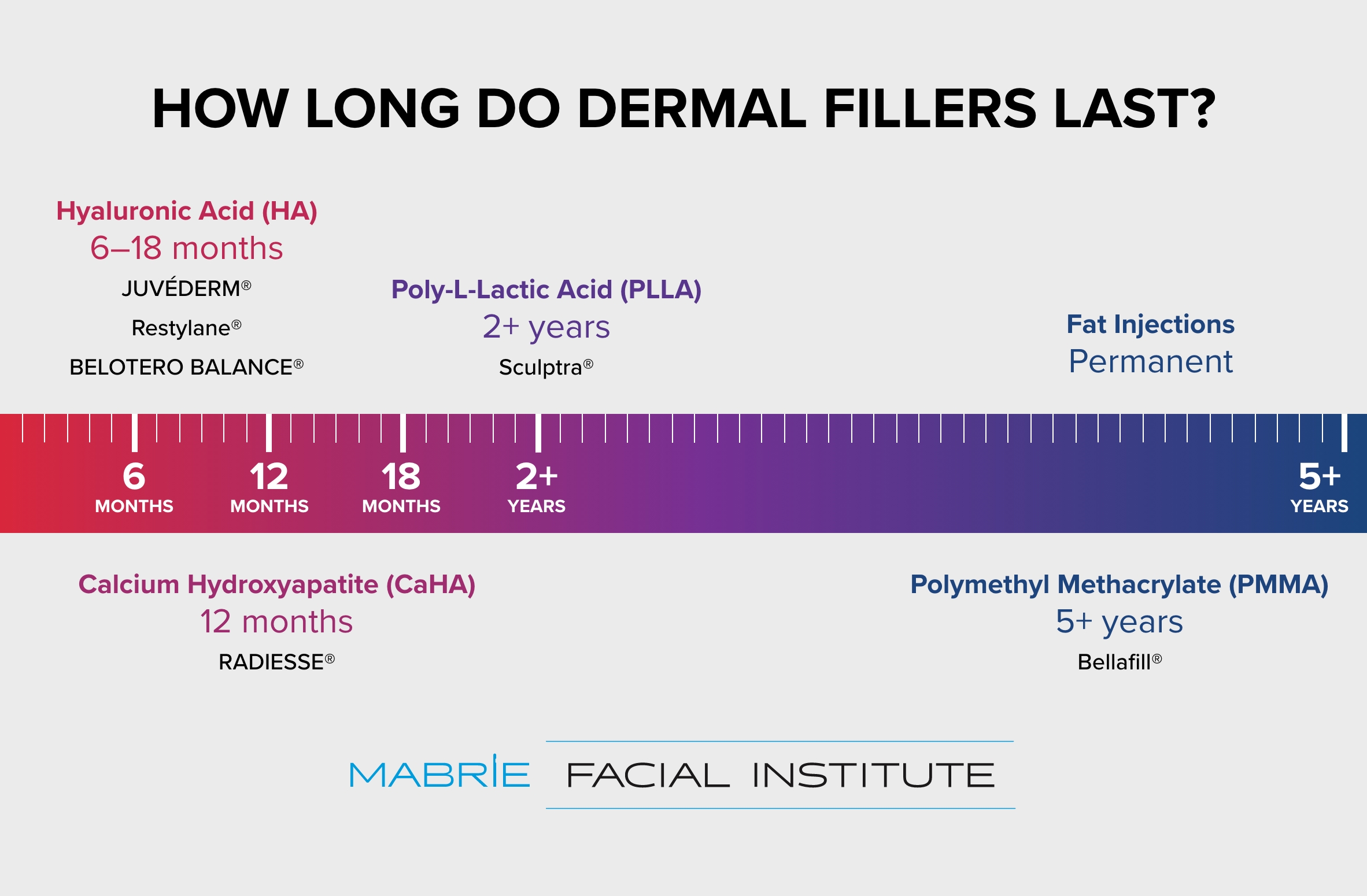
Hyaluronic Acid Fillers:
What are hyaluronic acid (HA) fillers?
A substance that is naturally found in the skin, hyaluronic acid is the most popular filler material. It‘s used in JUVÉDERM® and Restylane® products, and BELOTERO BALANCE®. It hydrates the skin and smooths wrinkles and creases.
How long do hyaluronic acid (HA) fillers last?
Patients often ask “How long does Restylane last?” or “How long does JUVÉDERM last?” While it depends on the formulation, the gel-like material typically lasts anywhere from 6 months to 2 years or longer. The material gradually breaks down and the body naturally absorbs the particles.
Calcium Hydroxylapatite Fillers:

What are calcium hydroxylapatite (CaHA) fillers?
This substance naturally occurs in the body–primarily in the bones. RADIESSE is an FDA-approved filler formulated with CaHA. The microscopic particles are suspended in a smooth, thick gel.
How long do calcium hydroxylapatite (CaHA) fillers last?
The filler typically lasts about 12 months, and it also triggers the body to produce more of its own collagen.
Poly-L-Lactic Acid Fillers:

What are poly-l-lactic acid (PLLA) fillers?
This synthetic filler is made using a biocompatible, biodegradable substance (it’s safe to use in the body). PLLA was commonly used in medical devices before the FDA approved its use as an anti-wrinkle treatment. PLLA is usually injected deeper than other fillers and works by stimulating collagen production. Sculptra is the most commonly used PLLA filler in the United States.
How long do poly-l-lactic acid (PLLA) fillers last?
The gel in which the PLLA is carried dissipates after only a couple of days, but the results can last more than 2 years.
Polymethylmethacrylate (PMMA) Fillers:

What are polymethylmethacrylate (PMMA) fillers?
This is also a biocompatible material with a long track record of being used safely in medical implants and other devices. Bellafill® is a collagen-based filler with PMMA microspheres that provides structural support and produces smoother skin.
How long do polymethylmethacrylate (PMMA) fillers last?
When used to correct nasolabial folds, the results can last more than 5 years because the microspheres remain in place even as the body reabsorbs the collagen gel.
Fat Injections/Fat Grafting
What are fat injections/fat grafting?
Facial fat grafting involves using liposuction to harvest fat from another area of the body, then purifying it and injecting it into the face. Purified fat can be used in multiple areas of the face.
How long do fat injections last?
Fat grafting is considered a permanent procedure, but not all the transferred fat survives the process, making results difficult to predict. Sometimes multiple treatments are required.
A Final Word
It‘s important to remember that our faces continue to lose volume as we age, so maintaining the optimal results involves adding additional volume. By not waiting until the filler is completely absorbed, we use less filler for maintenance.
To get more information about fillers, contact us online or call us at (415) 445-9513. Our knowledgeable Concierge Team is available to answer any of your questions and schedule your appointment.
Until then, stay beautiful!
*Everyone is different, and your results may vary. Conditions such as significant weight loss, certain health concerns, and other factors can affect results longevity.

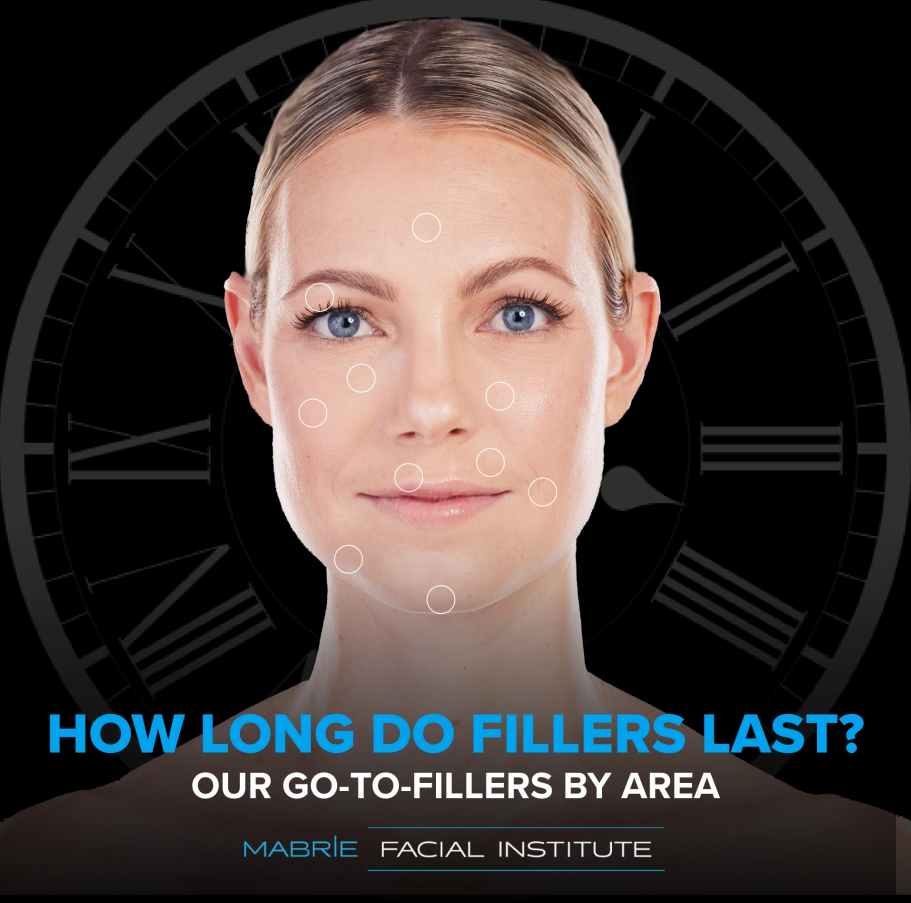



Wasn’t aware hyalironoc acid was an option! Interesting!
Informative and valueble info. Great treatment and amazing results
very interesting.
Looking to add left cheek volume to match right cheek volume. Does the Doctor Mabrie due the injections or some other staff member instead
Hi Scott – Facial filler treatments are performed by Dr. Mabrie. Our new Physician Assistant, Kimberly, performs Botox/Dysport treatment, PRP hair treatment, and Kybella. Please give us a call when you’re ready for treatment. We look forward to welcoming you to the practice.
They last two weeks
Hi PS – thank you for checking-out our blog. Your fillers should last longer than 2 weeks. I’m sorry to hear that you’re not seeing some lasting results. I suggest contacting your Injector and scheduling a follow-up appointment. That’s feedback that any Injector wants to know and help you solve. In my practice, I see patients for at least 2 visits. That allows us to assess the results and build upon the foundation layers on the follow-up visit. It’s never a one-and-done. While every patient metabolizes fillers differently, typically fillers can last from 6 to 9 months depending on the area treated, the type of filler used for treatment, and your individual anatomy. If you’re results lasted less than a month, schedule a follow-up visit with your provider. I hope that’s helpful and that you don’t give up on the benefits of treatment.
Are there any medications that reduce the longevity of fillers for example gabapentin or nozanan or clonazapam or Percocet
Thank you
Hi Jo ~ Thank you for checking out our blog and your questions about medications (gabapentin, nozanan, clonazapam, or percocet) affecting the longevity of filler. This is a great question! We have not seen that these medication affect filler duration. We also did some double-checking with the labs and they relay the same. If you are taking any of these medications, it should not affect your filler duration. I hope that helps.
I had the same experience.. the filler I used lasred 2 months not up to two years. I spend a lot of mpney for a filler to last 2 months. I had a follow up appt. They used a different filler, gone in 1 month.
Hi Gg ~ Thank you for checking-out our blog about Dermal Filler longevity. I’m sorry that your filler did not last longer than a few months. Some patients metabolize filler faster than others; however, there could be other reasons including the injection depth/plane, type of filler used in the treatment area, and/or not enough filler under the skin to make a visible difference in the desired area. If you’re a patient of our office, please give us a call for a follow-up appointment. It would be beneficial to see you in-person and assess your results.
I have the same issue! I have tried several different fillers and gone to 3 different injectors.. yet my fillers have only lasted anywhere from 1 week to 1 month. I don’t understand! I eat healthy and drink plenty of water.
Hi Amber – thank you for sharing your concern. Typically, volume loss during the first month post-injection is not from the metabolization of the filler itself, but rather from the decrease in swelling. During and immediately after injections, swelling sets in, and it can very deceptively appear as volume from filler. As the swelling slowly decreases over the course of a month, it can appear as though the fillers themselves may be decreasing. This can be discouraging to patients, but rest assured the filler is there, you likely need to continue building on it. We find the best, most natural results are achieved by a second visit, a refinement visit, where we continue layering the filler building on the results from before. I hope this was helpful.
What is your opinion of microneedling the area from above your mouth to your nose instead of filler in those lines?
Hi Lynne – Microneedling will help to stimulate your own collagen growth to improve wrinkles to this area, but it typically requires multiple treatments and a longer wait period to see results from treatment since it takes time for your own collagen to grow. The downtime of this treatment varies depending on how your skin reacts and heals. The benefit of using dermal fillers is that results are visualized immediately with minimal downtime. Depending on the depth of the lines a patient may need only one filler treatment. Please keep in mind, these two treatments can be done in combination with one another to address the lines, but requires proper timing between the two types of treatments. Hope this was helpful.
It’s good to know that dermal fillers can last for 24 months. My sister has been telling me about how she wants to make sure that her face looks firm in the coming years. I’ll share this information with her so that she can look into her options for getting facial injections.
https://www.naplesvisionofbeauty.com/services/botox-and-injectables/
Hi Austin – we are happy this information was helpful to you! If you have any additional questions about dermal fillers please don’t hesitate to reach out to our office.
My mom wanted to try out the dermal fillers for her lower part of the face. Quite effective information I will share this article with my mother as well.
Hi Katherine,
I’m so glad you found this information helpful! We would love to see your mom at our office, or answer any additional questions you have about dermal fillers.
I have visited one of the top restorative facility firm and find a good pace that dermal fillers Bristol as it was extremely educational. For the time being, your article is truly all around clarified and educational also. Keep it up. Check @ https://jbcosmetic.co.uk/
Hi Lisa,
Thank you for sharing that site with us, we will check it out! We are glad to hear you found this information helpful and educational. If you have any additional questions about dermal fillers please don’t hesitate to reach out to us.
It’s good that you point out that dermal fillers can improve the appearance of wrinkles. I’ve been looking for a way to get rid of the wrinkles on my face, so I’m considering getting dermal fillers. I’m going to look for a good health clinic in my area that does dermal fillers.
https://davincimed.com/dermal-fillers/
Hi Bob,
I’m happy to hear that you found this information helpful! There are different methods of treatment for wrinkles. Depending on the location of the wrinkle we recommend neuromodulator injections, dermal fillers or a combination of the two. If you have any further questions please do not hesitate to reach out to our office.
Do you use sculptra on cheeks and jawline? I don’t see Sculptra mentioned on your website or in the diagram.
Hi KJ,
Thanks for your question! Our office does not use Sculptra. We use hyaluronic acid fillers as well as calcium hydroxyapatite fillers.
What is the difference between fillers and botox?
Hi Patty, thanks for the question! Botox is a substance that is injected into muscles and acts by cutting off the signal to the muscle that normal tells the muscle to contract. With the muscle no longer contracting as strongly the skin above it lies smooth, improving the appearance of wrinkles. Fillers, on the other hand, are a gel-like substance that are injected into the face to add volume and reshape the face; they can be thought of as a ‘sculpting material’. Hope this was helpful. You can also check out our Dermal Fillers 101 page for more details, we have an entire section on fillers vs botox.
What is the usual ball park price of fat fillers for my marionette face.
Hi Connie, thanks for reaching out! We only use hyaluronic acid fillers to treat the marionette lines due to the vasculature in the area. Our prices vary per injector. I’ve linked our website page HERE that reviews treatment pricing as well as consultation fees.